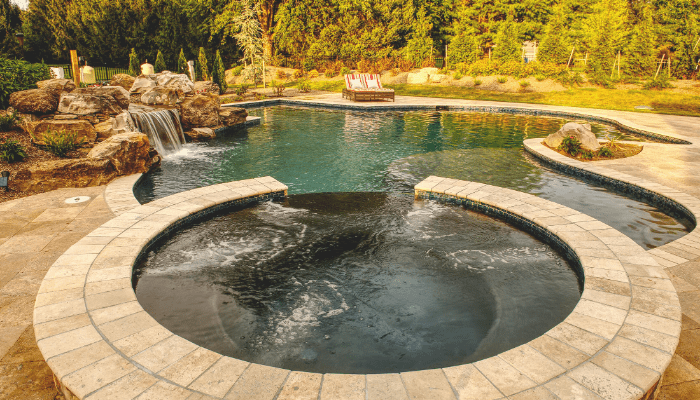Key Takeaways
- Pool meditation uses water’s buoyancy and calm to deepen relaxation and focus.
- Benefits: lowers stress, eases joints, improves breath, and resets tension.
- Styles: floating (stillness) or moving (slow, breath-led motion).
- Design for privacy, soft lighting, and calming sounds.
- Oásis Biosistema builds natural pools and gardens ideal for mindful practice.
- Avoid multitasking, cold water, tech, and self-judgment. Just be present.

In water, we are born. In water, we find peace. Our bodies are 60% water. Our brains? Closer to 75%. So maybe it’s not surprising that when everything feels like too much, slipping into water feels like coming home.
But let’s back up.
You meditate. Or you’ve tried to meditate. You’ve sat on the mat. Fidgeted. Itched your nose. You wondered if you’re doing it wrong. Maybe you are. Or maybe you’re just not doing it in the right medium.
Enter pool meditation: a hybrid of stillness, sensory awareness, and movement, all buoyed by the magic of water. It’s meditation for people who can’t sit still. And also for people who can, but would rather float.
More than just a wellness trend, pool meditation taps into something primal. Weightlessness. Quiet. Temperature. It’s like someone turned down the volume on the entire world, and your nervous system finally gets a break.
No incense. No chanting. No judgment. Just you, water, and a few easy techniques that work even if your brain is running a five-tab mental browser.
Ready to float your way back to focus? Let’s dive in.

What is Pool Meditation?
Let’s keep it simple: pool meditation is exactly what it sounds like. It’s meditation. In a pool. But unlike sitting cross-legged in your living room trying to ignore the sound of your neighbor’s leaf blower, this version comes with buoyancy.
More technically, pool meditation is a form of aquatic mindfulness. You can float. You can swim. You can stand perfectly still in waist-high water. It’s about using the sensory environment of the pool. The resistance, the silence, the support is all to bring your awareness into your body and out of your head.
Water shifts things. It numbs external distractions. It cradles your body, takes pressure off your joints, and provides a level of sensory feedback that dry-land meditation often can’t match. Think less yoga studio, more sensory deprivation tank with sunlight.
It’s also surprisingly forgiving. Your thoughts can wander. Your technique doesn’t need to be perfect. The water is the constant here, not your brain.
And that’s the magic of it.
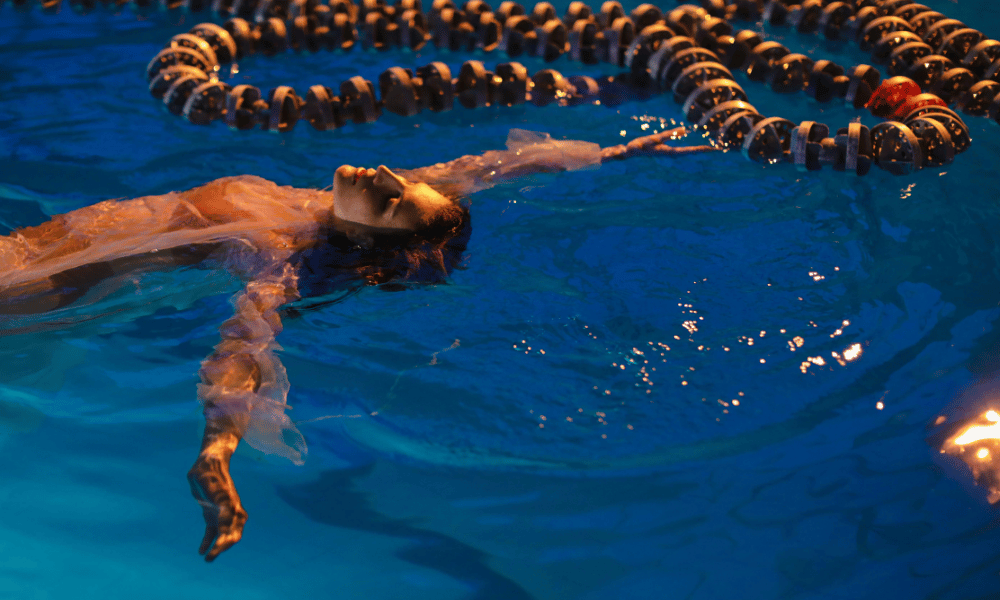
The Mental and Physical Benefits of Pool Meditation
Let’s talk about perks. Because this isn’t just about chilling in your pool pretending you’re doing something meaningful.
1. It regulates your nervous system.
Cool or warm water stimulates the vagus nerve. That’s the one responsible for calming your heart rate and slowing your breath. Aka the brakes for your stress response.
2. It reduces joint strain.
If your body gets cranky during seated meditation (knees, hips, spine), water takes that weight off. You get mindfulness without the physical discomfort.
3. It enhances focus.
The sound is muffled. Movement is slower. The mind gets fewer pings from the outside world, making it easier to focus on breath, sensation, and intention.
4. It supports breath awareness.
Water naturally encourages diaphragmatic breathing. That’s a fancy way of saying you breathe deeper. Which helps oxygenate your brain. Which helps you stop spiraling about that email you forgot to send.
5. It offers a full-body reset.
Floating? That’s zero gravity for your spine. Walking laps? That’s gentle strength with zero pounding. It’s not just meditation. It’s subtle therapy.
Bottom line? This practice hits physical, emotional, and mental well-being in one floating shot.

How to Practice Pool Meditation (Step-by-Step)
You don’t need a silent retreat or a waterproof zafu cushion. Just some water and a little willingness. Here’s how to start:
Option 1: Floating Meditation
- Find calm water: preferably a quiet time of day.
- Lie back and float. Use a noodle, mat, or floatation aid if needed.
- Close your eyes. Tune in to how the water holds you.
- Breathe deeply and slowly. Count the inhale and exhale. Let the breath set the rhythm.
- Let thoughts come and go. Don’t try to “clear your mind.” Just be.
- Stay for 5-15 minutes. Then gently bring awareness back to the world.
Option 2: Moving Meditation
- Start walking or swimming slowly.
- Match your breath to movement. One stroke, one inhale. One stroke, one exhale.
- Feel the resistance of the water. Let it slow you down.
- Focus on your body’s alignment. Posture, limbs, movement.
- Let everything else fall away. You’re not here to sweat. You’re here to sync.
Pro tip: Leave your phone inside. And no counting laps. This is not a workout. It’s presence.
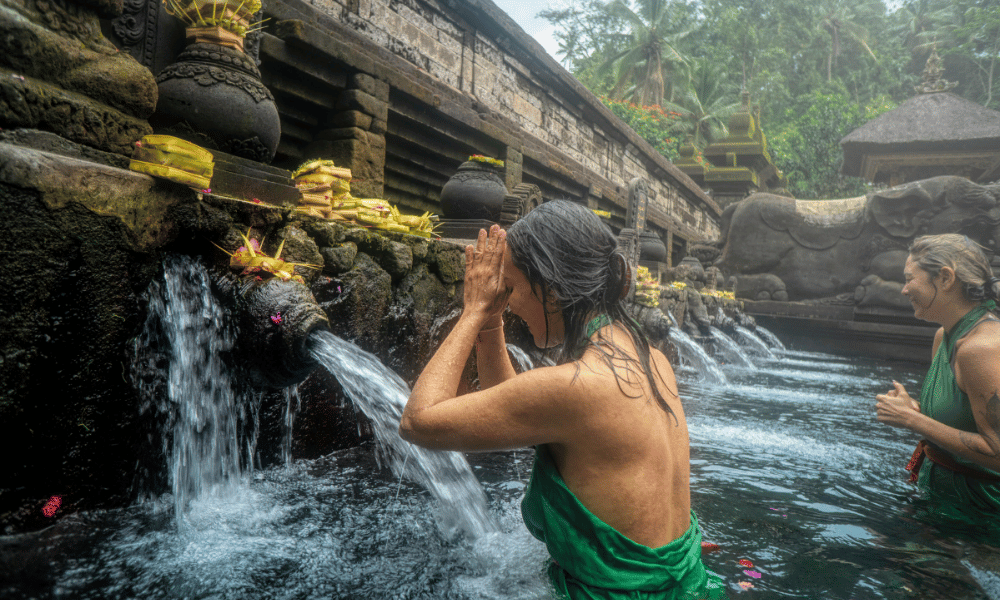
Designing Your Pool for Meditation
Don’t overthink this. You’re not building a spa in Bali. You’re just making it easier to want to get in the water and stay.
1. Create Privacy
Plants, screens, pergolas. Anything that shields you from prying eyes or barking dogs. The more private it feels, the safer your nervous system can relax.
2. Add Ambient Sound
Floating speakers with nature sounds or calming tracks. Or let the water handle it. Ripples, wind, and breath are often enough.
3. Consider Lighting
Soft underwater lights for early mornings or evenings. Candlelight if you’re feeling fancy. Just no LEDs that change color like a nightclub.
4. Use Floating Supports
Mats, noodles, or mesh floats can make stillness easier. Especially if you’re not a confident swimmer.
5. Aromatherapy On the Perimeter
No oils in the water (please). But surrounding the pool with calming scents like lavender, rosemary, mint enhances sensory immersion.
Keep it minimal. The goal is calm, not clutter.
Create Your Own Living Oasis with Oásis Biosistema
Sad old yard or a swimming pool full of chemicals?
Instead, imagine stepping outside and being greeted by the sound of water gently moving through a natural, plant-filtered natural pool. No chlorine. No harsh edges. Just soft, swimmable water cradled by greenery and designed to harmonize with your body, your mind, and the land around it.
At Oásis Biosistema, we don’t just build pools, we create immersive, living environments that support your well-being from the ground up. Our natural pools use biological filtration and aquatic plants to keep water crystal clear and safe, without disrupting your skin, your senses, or the ecosystem. No buzzkill chemicals. No artificial vibes. Just real water, doing what water does best: heal.
And we don’t stop at the pool’s edge. Our meditation gardens are designed with intention — native plants, low-maintenance textures, soft walking paths, shaded sitting areas, and quiet pockets for reflection or mindful movement. It’s the perfect setup for pool meditation, mindful gardening, or just escaping from digital chaos without ever leaving your property.
Health isn’t just something you chase inside a gym or a wellness app. It’s something you grow, right outside your door.
If you’re ready to turn your outdoor space into a personal sanctuary. One that invites calm, supports your health, and literally breathes with the seasons. Let’s build it together.
Oásis Biosistema. Where water, plants, and peace come together. Naturally.
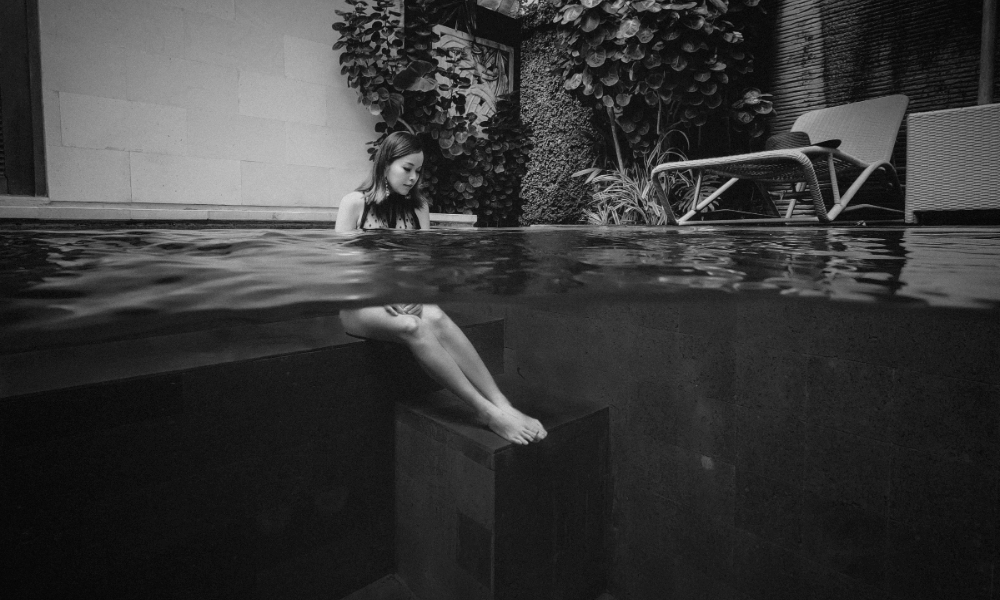
Pool Meditation vs. Traditional Meditation
Let’s clear this up: you don’t have to choose sides. Pool meditation isn’t trying to replace traditional meditation. It’s just playing a different position on the same team. Both are about presence. Both build awareness. But they offer different experiences, and knowing those differences can help you decide what works best for you on any given day.
Traditional meditation usually takes place on a mat or cushion. It’s still, grounded, and often focused on internal anchors like the breath, body sensations, or sounds. It’s accessible anywhere. You just need a quiet corner and a few minutes.
Pool meditation, on the other hand, brings your body into the mix in a whole new way. The water holds you. You can float or move. The focus shifts to external sensations, the feel of water against your skin, the rhythm of your breath as it echoes in the pool, the gentle sway of your body as it responds to motion. It’s sensory. It’s physical. It’s immediate.
If you have tight hips, a stiff back, or restlessness that makes sitting for 20 minutes feel like a prison sentence, pool meditation can be a welcome alternative. The buoyancy of water supports your body in a way cushions can’t. And even subtle movement becomes part of the practice, not a distraction from it.
Traditional meditation is powerful when you need deep focus or emotional processing. Pool meditation shines when you want to calm your nervous system, relieve physical tension, or escape sensory overload.
Different tools. Same goal. Some days you sit. Some days you float. What matters is that you show up.
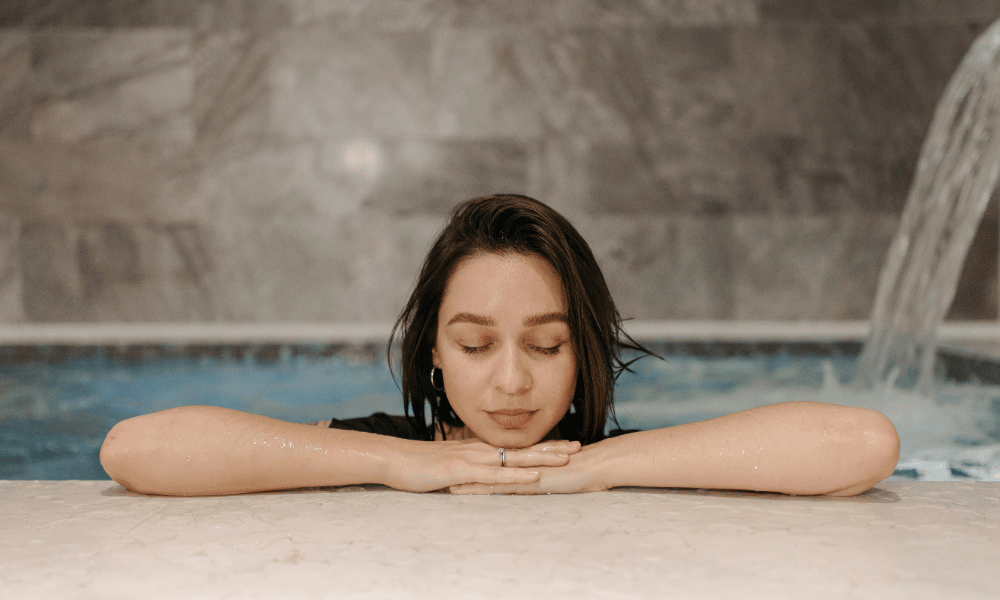
Common Mistakes to Avoid
Even chill practices can go sideways. Here’s what to watch out for:
- Trying to multitask: This isn’t the time for laps or lunges.
- Setting expectations too high: You’re not becoming a Zen monk. You’re floating. Let that be enough.
- Using cold water (unintentionally): Shocked systems don’t relax. Make sure your pool is warm enough for comfort.
- Bringing tech into the water: No phones. No smart watches. You’re not here to track progress.
- Judging your practice: If your mind wandered 47 times, congrats, you’re human.
This is practice, not performance. Let go of the outcome. Focus on the experience.
Conclusion
You don’t have to live in a monastery to find peace. Sometimes, you just need to sink into the shallow end and listen to your breath bounce off tile.
Pool meditation is not a performance. It’s not another thing to optimize or perfect. It’s you, giving your mind a break while your body floats. And maybe that’s the most productive thing you’ll do all day.
Water isn’t just soothing. It’s a signal to your entire system that it’s safe to let go. The temperature, the weightlessness, the gentle soundscape. It all adds up to a full-body permission slip.
Start with five minutes. Float. Breathe. Count your strokes. Listen to the water. Then do it again tomorrow, not because you “should,” but because it makes everything feel a little bit less sharp around the edges.
And if someone asks what you’re doing out there, just say, “Practicing high-level aquatic mindfulness.” Sounds better than “avoiding Slack.”
Trust the water. It’s been calming chaos long before meditation apps ever existed.
Want a pool that soothes more than just your body?
At Oásis Biosistema, we design natural, regenerative pools and meditative landscapes that support stillness, clarity, and breath.
FAQ
How do you meditate in a pool?
To meditate in a pool, float or sit in shallow water, close your eyes, and focus on slow, steady breathing. Notice the feeling of water supporting your body and the surrounding sounds. Let your thoughts pass without judgment while staying aware of your breath and body.
What is swimming meditation?
Swimming meditation is a mindful swimming practice that combines physical movement with mental focus. By paying attention to each stroke, breath, and the feel of water on your skin, you create a meditative state that reduces stress, improves rhythm, and increases the joy of swimming.
What is the water meditation method?
The water meditation method involves using water to enhance mindfulness and relaxation. This can include floating, wading, or submerging while focusing on breathing and bodily sensations. The buoyancy and gentle resistance of water help quiet the mind, ease muscle tension, and promote a sense of calm.
What is aqua meditation?
Aqua meditation is a type of mindfulness practice performed in water, often in pools or calm natural settings. It blends meditation techniques like breath awareness and visualization with the soothing properties of water, creating a calming experience that benefits both mental clarity and physical relaxation.


